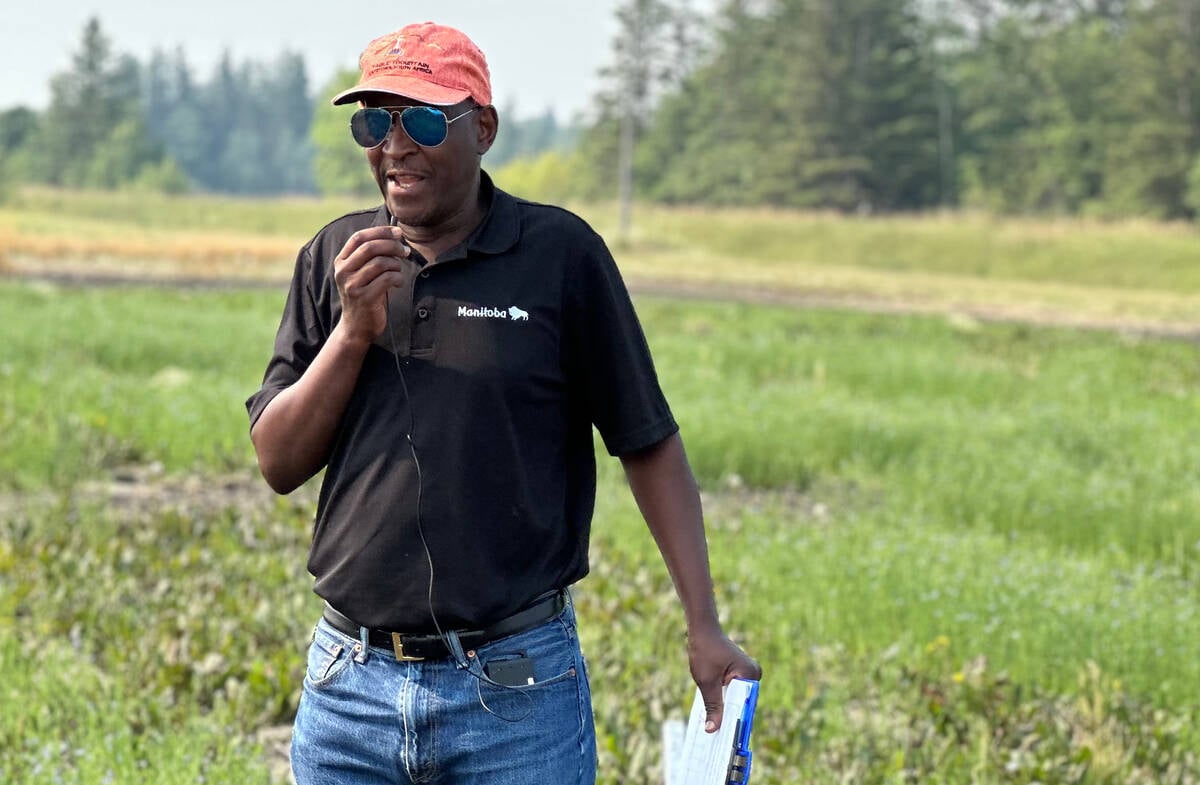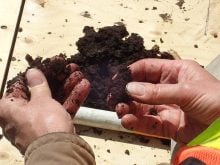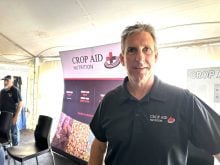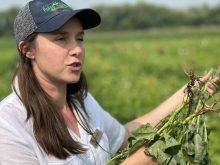In an 1860 report to the British government, Captain John Palliser recommended against settling the southern Canadian Prairies because he considered the area too arid and poorly suited for farming.
Now, a century and a half later, his words may be prescient.
The Palliser Triangle, a 200,000-square-km area named after the 19th century explorer and stretching across southwestern Manitoba, southern Saskatchewan and southeastern Alberta, currently produces most of Canada’s high-quality hard red spring wheat.
But climate circulation models predict that, if global warming continues, the area will be suitable only for livestock grazing by the end of this century, according to Don Smith, a McGill University plant scientist.
Read Also

How much nitrogen can farmers really cut?
Manitoba fertilizer trials look for nitrification inhibitor sweet spot, to lower greenhouse gas emissions and cost without hurting yield.
MAJOR ALTERATIONS
Smith told a recent seminar at the University of Manitoba that rising temperatures brought on by climate change will bring major alterations to the crop-growing regions of the Prairie provinces.
Since climate change is likely inevitable, the most important thing farmers can do is prepare for it, he said.
“They should be open to change because they’re going to need to adapt.”
The two watchwords for climate change on the Prairies are: warmer and drier.
The greatest impact will be on the soil. Drier soils have lower organic content. Warmer weather produces greater average wind speeds, resulting in a 20 to 30 per cent potential for more wind erosion, said Smith.
LESS WATER
Warmer and drier weather will produce other results as well, Smith outlined in a PowerPoint presentation.
Reduced rainfall and retreating glaciers will mean less available water for both dryland and irrigation farming.
New weeds, insects and plant diseases will spread northward, some on the wings of stronger winds.
Grasses and native vegetation will change to hardier but less grazeable species.
It’s possible that, within decades, the central part of the Palliser Triangle will no longer be suitable for growing crops, Smith said.
That’s the bad news. The good news is that crop production will migrate northward into an area as large as the region going out of production.
The downside is that the soils in the new area are younger, less fertile and therefore less productive, said Smith, who specializes in crop ecology.
Overall, the net result of climate change is a decidedly mixed bag for agriculture in the West. But, as with anything, there are positives and negatives, he said.
NEW PESTS
On the plus side, no-till and minimum-till systems will become more feasible with warmer soils. These systems store water and sequester carbon, creating less potential for soil erosion and lowering greenhouse gas emissions.
However, the arrival of new pests creates a greater need for insecticides, fungicides and herbicides.
Smith said increased potential for irrigation exists in some areas. In others, however, irrigation use will decrease as meltwater from glaciers decreases and river flows decline.
Smith noted glaciers around the world have generally retreated about 30 per cent in the last century. In Alberta, the Peyto glacier, which feeds mountain streams and eventually rivers used for irrigation, has lost 70 per cent of its mass in several decades.
LONGER GROWING SEASON
A longer growing season means the potential for growing new crops and expanding existing ones. Smith, originally from Saskatchewan, said the possibility exists for growing more winter wheat in areas currently devoted to spring wheat.
But just because more crops can be grown farther north doesn’t mean they will be. Smith said a milder growing season won’t greatly help Quebec, where he works, because much of the province is a giant slab of granite called the Canadian Shield.
Bes ides teaching at McGill, Smith is the scientific director for the Green Crop Network, a national research network for greenhouse gas management in agricultural production systems.
———
“They’regoingto needtoadapt.”
– DON SMITH, MCGI LL UNIVERSITY














